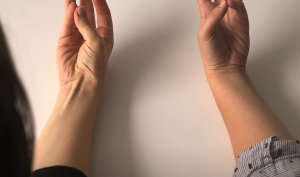This tendon is linked to an ancient muscle called the palmaris longus, which was primarily employed by arboreal primates like lemurs and monkeys to move from branch to branch. As humans and ground-dwelling apes, such as gorillas, no longer rely on this muscle or tendon, both species have gradually lost internal function.

Nonetheless, evolution moves at its own pace – slowly – and approximately 90% of humans still have this vestige trait passed down from our primate progenitor. To determine whether you have this tendon, place your forearm on a table with your palm facing upward. Place your pinky finger next to your thumb and elevate your hand slightly off the surface. If you notice a raised band in the middle of your wrist, you have a tendon attached to the still-existing palmaris longus.
If you do not detect this tendon, you are demonstrating an evolutionary change!
The existence or absence of this tendon does, in fact, provide a fascinating connection to our ancient heritage, with individuals who possess it carrying a visible link to our evolutionary past. Individuals without this tendon also provide tangible evidence of continuous human evolution.
The ways in which our bodies preserve evidence of our evolutionary history continue to astound us. It’s interesting how our physical characteristics, even those that appear unimportant or outmoded, may give profound insights into our evolutionary history.

